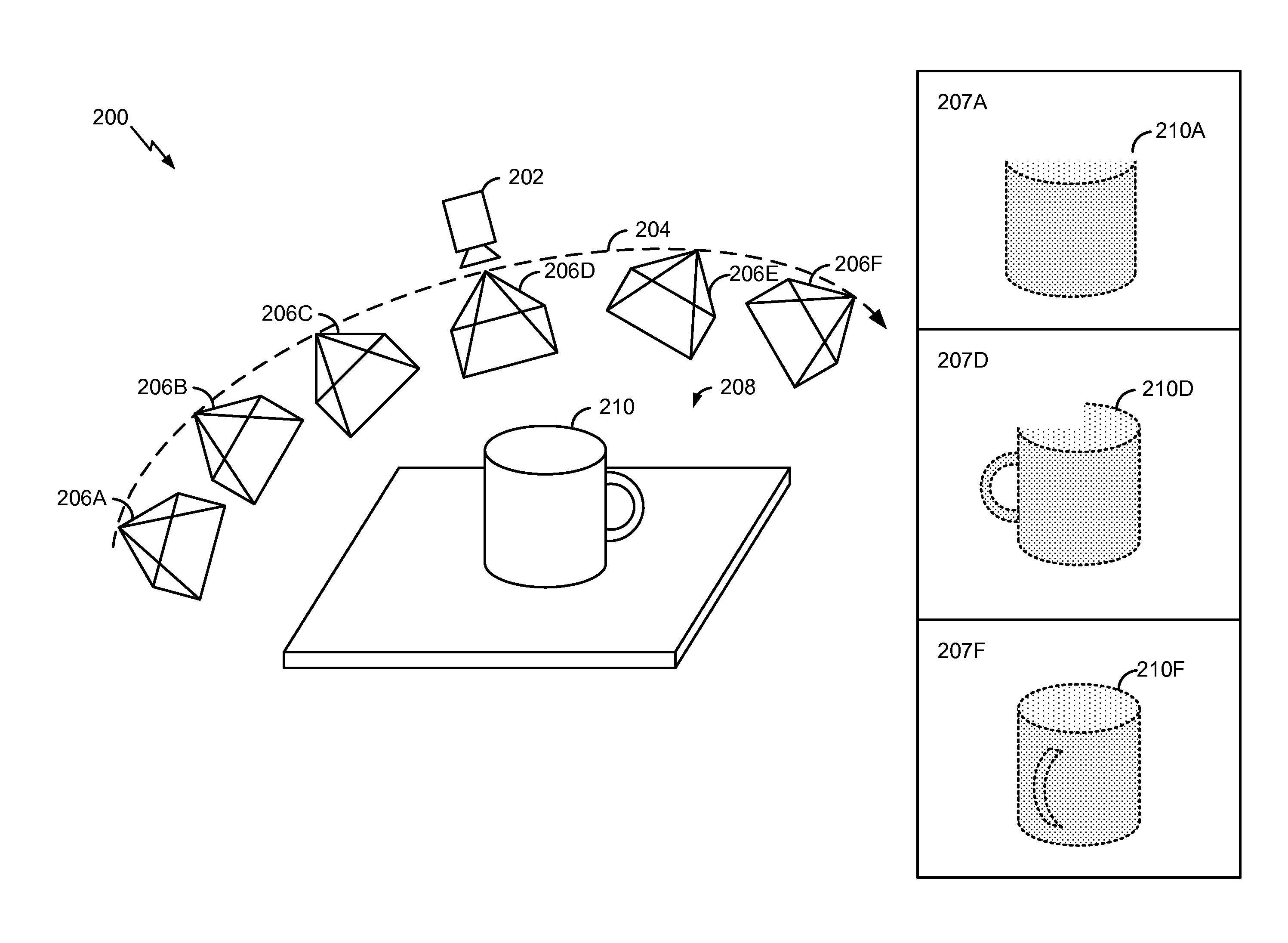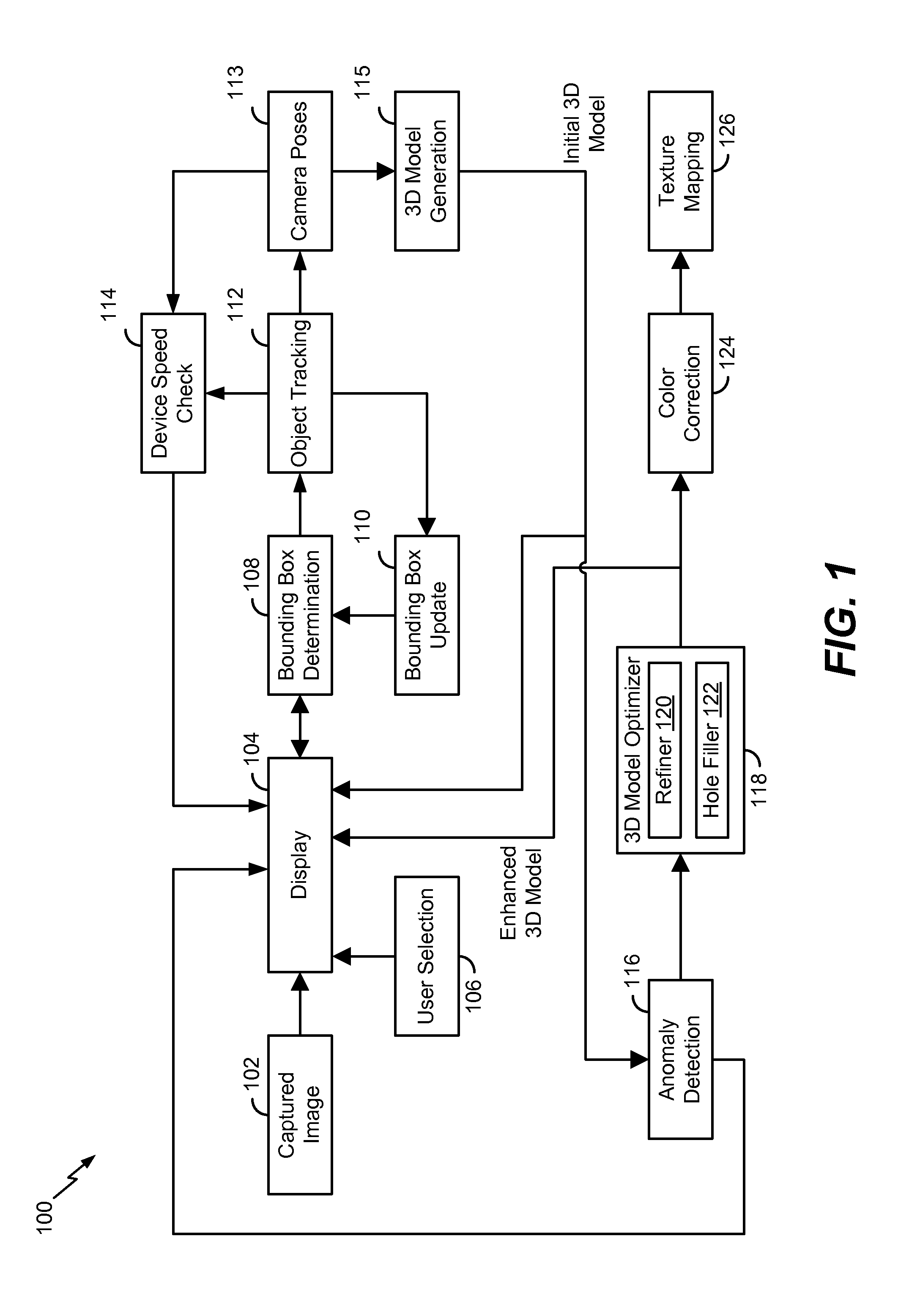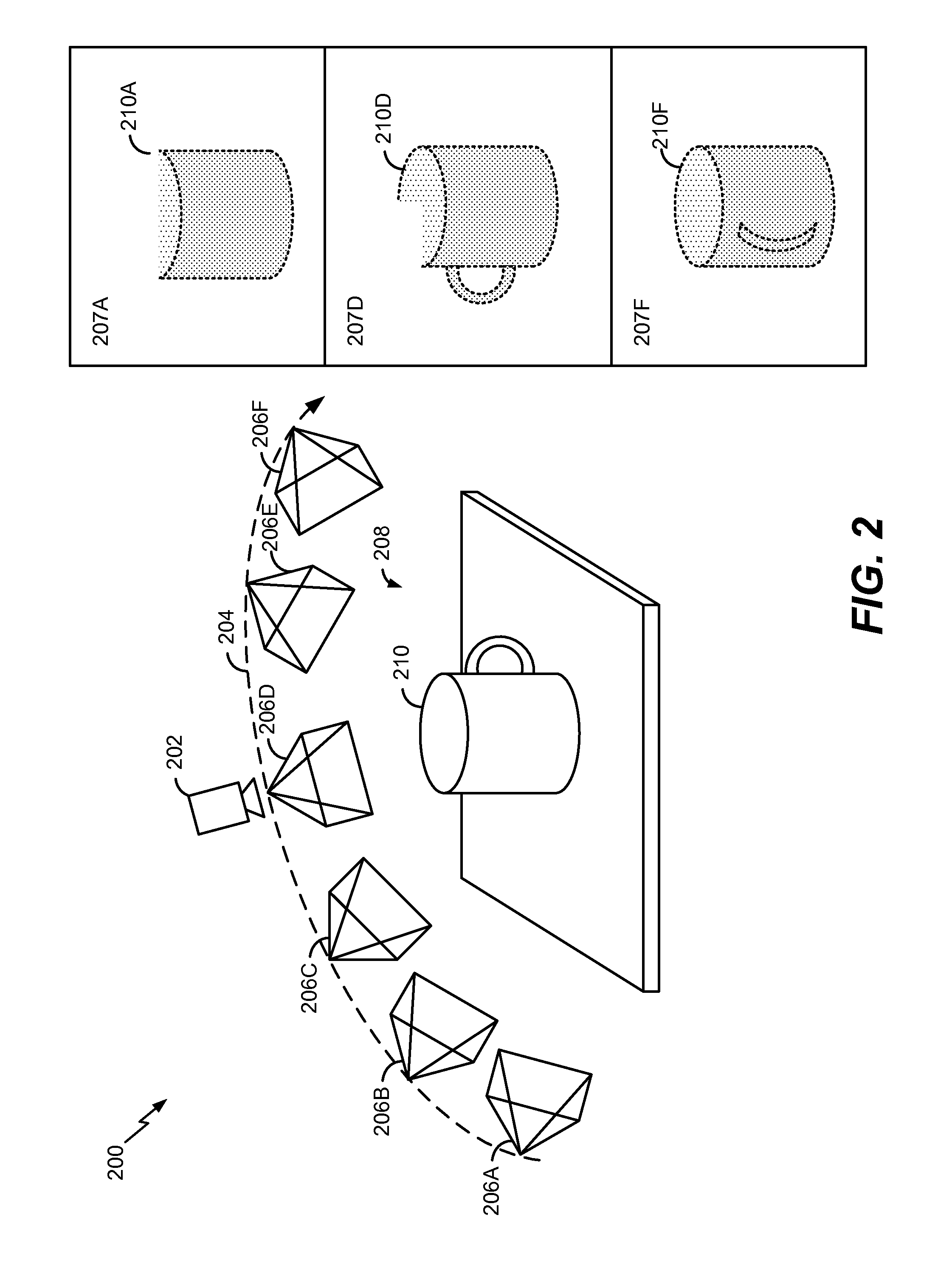Three-dimensional model generation
a three-dimensional model and model generation technology, applied in the field of three-dimensional (3d) model generation, can solve the problems of not generating 3d models in real time, incomplete or inaccurate 3d models may be generated, insufficient or inadequacies may go unnoticed, etc., and achieves the effect of higher priority
- Summary
- Abstract
- Description
- Claims
- Application Information
AI Technical Summary
Benefits of technology
Problems solved by technology
Method used
Image
Examples
Embodiment Construction
[0034]Particular aspects of the present disclosure are described with reference to the drawings. In the description, common features are designated by common reference numbers throughout the drawings. The techniques described below are generally applicable to a mobile device. However, it will be appreciated that the techniques are also applicable to an unmanned vehicle (e.g., a drone), a robot, an aircraft, an automobile, a mounted camera, a personal camera, a processing system communicatively coupled to mounted cameras, other devices that are attached to (or included within) a processing device compatible to generate a 3D model, etc.
[0035]FIG. 1 is a block diagram of a system 100 configured to generate a three-dimensional (3D) model based on a sequence of image frames. For example, the system 100 may generate a 3D model of an object based on a set of captured images 102. The set of captured images 102 may include a sequence of image frames captured by an image capture device, such ...
PUM
 Login to View More
Login to View More Abstract
Description
Claims
Application Information
 Login to View More
Login to View More - R&D
- Intellectual Property
- Life Sciences
- Materials
- Tech Scout
- Unparalleled Data Quality
- Higher Quality Content
- 60% Fewer Hallucinations
Browse by: Latest US Patents, China's latest patents, Technical Efficacy Thesaurus, Application Domain, Technology Topic, Popular Technical Reports.
© 2025 PatSnap. All rights reserved.Legal|Privacy policy|Modern Slavery Act Transparency Statement|Sitemap|About US| Contact US: help@patsnap.com



